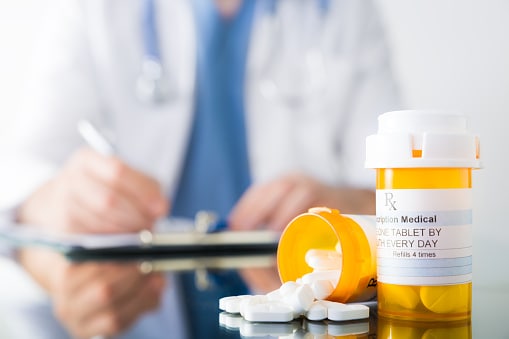Key points
- Getting a vaccine or taking certain antibiotics after exposure to anthrax can help prevent illness. This is called post-exposure prophylaxis.
- If you think you've been exposed to anthrax, see a healthcare professional immediately.

Overview
Anthrax is rare, and most people will never be exposed to it. However, people with certain jobs, hobbies, and activities may have a greater risk of exposure. People could also be exposed to anthrax during a bioterrorism attack.
Anthrax can be deadly if action isn't taken quickly after exposure. It is important to know how to protect yourself and others around you if you are exposed to anthrax, including during a bioterrorism event.
Anthrax is not contagious, which means you can't catch it from another person like the cold or flu.
Preventing anthrax before you're exposed
Routine occupational use (before exposure)
The anthrax vaccine is approved for adults ages 18 to 65 years in certain jobs. People who get the vaccine will get 5 shots over 18 months and will get yearly boosters for protection. Anthrax vaccine is recommended for people who hold the following jobs:
- Certain laboratory workers who work with anthrax
- Some members of the United States military
- People whose jobs are handling animals or animal products
People with the following conditions should not get the vaccine before exposure:
- Pregnancy
- Serious allergic reaction to the anthrax vaccine
- Severe allergy to any part of the anthrax vaccine
People with severe allergies should tell their doctor about their allergies before getting the vaccine.
If anthrax vaccine is recommended or required by your employer because of your job responsibilities, you should ask your employer if they offer the vaccine or to refer you to a clinic in your community where the vaccine is available. You can also contact your state health department to learn more about where to get the vaccine in your community if it is recommended for you.
Preventing anthrax if you're exposed
Vaccine
Sometimes anthrax vaccine is recommended for people who may have been exposed to anthrax. The Food and Drug Administration (FDA) has approved emergency use of the vaccine after a possible anthrax exposure. This is called post-exposure prophylaxis (PEP). There are two types of anthrax vaccines approved by the FDA for people ages 18 to 65 after possible anthrax exposure:
Anthrax vaccine is approved for use after exposure in people aged 18 to 65. In these situations, the vaccine is given after anthrax exposure to prevent the disease (post-exposure prophylaxis, or PEP). There are two types of anthrax vaccines approved by the FDA to use as PEP:
- Anthrax Vaccine Adsorbed (BioThrax®), which consists of 3 shots of anthrax vaccine over 4 weeks
- Anthrax Vaccine Adsorbed adjuvanted, which consists of 2 shots given 2 weeks apart
In both cases, people exposed to anthrax will also get antibiotics for up to 60 days as an added precaution to prevent them from getting sick with anthrax.
In an emergency, the only people who shouldn't get the vaccine are people with a past serious allergic reaction to the anthrax vaccine, or anyone who has an allergy to one of the ingredients in the vaccine. Your healthcare professional can tell you about the vaccine's ingredients. These individuals should take antibiotics for 60 days.
Antibiotics
The bacteria that cause anthrax can be prevented by taking certain antibiotics after exposure. This is another form of PEP.
In an emergency
If there is an anthrax emergency, you will likely be given an antibiotic because you may have breathed in anthrax bacteria. You may receive doxycycline (DOX-i-SYE-kleen) or ciprofloxacin (sip-roe-FLOX-a-sin). These medicines reduce your chance of getting sick and dying.
Public health officials will provide information on who should get the medicine. It's important to take one of these medicines as soon as possible after the emergency starts. If you have questions, talk to a healthcare provider.
People who may have breathed in anthrax bacteria should take one of the medicines twice a day for up to 60 days. Most people will be given a 10-day supply to start. Public health officials will tell you whether you need more and how to get it. To reduce your chance of getting sick, take the medicine as long as you are directed and don't stop it early.
Resources
- Visit the U.S. Food and Drug Administration website
- See the Anthrax Vaccine Adsorbed Vaccine Information Statement
- See the vaccine package insert [PDF – 165 KB/16 pages]
- If you are in the U.S. military, visit U.S. Department of Defense or call 1-877-438-8222
